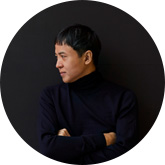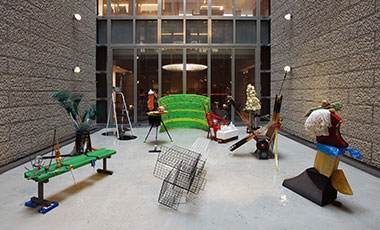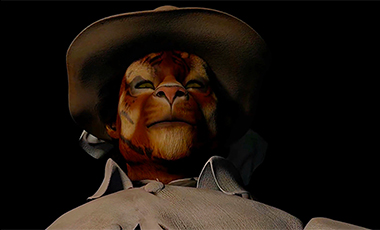Features / Review
Connecting Collective Intelligence: The Making of 《CONNECT, BTS》
posted 26 May 2020Collective intelligence they say has no place in exhibition curation. Curation is a creative activity that takes place in an utterly personal and solitary sphere. Curatorial collaboration is indeed nearly unthinkable unless there is a compelling agenda that is attractive to all potential participants in a project. Moreover, the curators need to have a rapport with each other, sharing similar views about society and its values. They furthermore need to have basic affinities in terms of exhibition methodology and ultimately also in respect to the selection of artists and artworks. That is why it is important to keep abreast of the latest interests and aspirations among curators and to remain attentive to new developments in the art scene, including any new trends or innovations. It is only this way that one can make curatorial collaboration happen when the occasion presents itself.
In 〈The Martian〉, a film about an astronaut (played by Matt Damon) who struggles to survive after being stranded on Mars, time is the fateful factor. As time goes by, the marooned astronaut gradually runs out of oxygen and food, diminishing his chance of survival. He is forced to constantly make life-or-death decisions, such as how to produce oxygen, how to grow potatoes, how to make water or how to overcome the time difference between Earth and Mars to send a message. Creating an exhibition connecting twenty-two artists from five cities was an experience not unlike Matt Damon’s struggle for survival on Mars. It was about being in the time zones of London, Berlin, Seoul, Buenos Aires and New York City all at the same time. It was about day becoming night and night becoming day. To set the schedule for the conference call, which lasted until the dawn every day, I had to be on a group chat around-the-clock. This is because a crash of different conventions, practices, schedules or interpretations can lead to unexpected situations at any moment.

《CONNECT, BTS》 Installation View of Exhibition in Seoul ⓒJang Jun-Ho
Initially, everyone was skeptical. As a matter of fact, organizing a public art project involving five countries with five widely divergent systems and practices in a seven-month time was simply not realistic. These challenges notwithstanding, not one of us bailed out. This is because the project was a collaboration with BTS. It was a no-brainer how great the synergy would be from the encounter of contemporary art with this global cultural phenomenon created by BTS and their fandom A.R. M.Y. around the positive message of global solidarity. Moreover, the values BTS have been advocating, such as the celebration of diversity and interest and faith in small things on the periphery of mainstream culture, are also values that have long been central to contemporary art and were certainly appealing enough to prevail on the artists to come on board. It was also decided from the outset that the project would underline the fact that fine arts and music are two art forms and genres that grew out of the same root.
However, this project with such a tantalizing proposal quickly turned out to be a never-ending series of adventures into and out of five different universes. Administrative procedures in place at the German exhibition hall Martin-Gropius-Bau are not the same as those used at the Serpentine Galleries of the United Kingdom. The exhibition space setup guide at Seoul’s DDP and the public art rules at Brooklyn Bridge Park are just as different as Korean and English are different as languages. The demands of technology-based artists are simply not the same as the demands of performance artists. Artists who create immaterial experiences tend to be care about details and often require materials of specific brands and the assistance from a technical director. To reconcile all these differences and complete the project within the given time frame, it was necessary to gain a sufficient understanding of individual systems and administrative practices of each city and institution and the requirements of each artist. Without this knowledge, the project couldn’t move forward.
When an exhibition spans several countries, cities and institutions, contracts become an important element of the organizing process. In a collaborative project involving curators and artists of diverging cultural and social backgrounds, contracts serve as a kind of blueprint that ensures that the exhibitions take place without a hitch. For the first three months, I spent most of my time negotiating contract terms with each exhibition venue and studio. Since I had extensive prior experience with the contractual process used by art galleries in the United Kingdom and the United States, I initially thought that it could be easily dealt with using a standard contract format. But, as it turned out, each country, city, art gallery and park demanded their own specific terms, and a different version of the contract had to be drafted for each of them. Contractual requirements are radically different between an indoor exhibition at Martin-Gropius-Bau and an outdoor exhibition at Brooklyn Bridge Park. For example, Martin-Gropius-Bau is extremely strict about its copyrights to photos and videos and commissions. Therefore, no photographer or camera crew is allowed to take pictures or shoot videos without express permission under a direct agreement with the gallery. In the case of the Serpentine Galleries of the United Kingdom, they wanted a highly detailed contract with a strict built-in guide with regard to various uses and extensions of more flexible types of contents. Moreover, for the artworks displayed outdoors, we had to separately negotiate with Kensington Gardens.
Another hurdle to overcome had to do with the exhibition of Anthony Gormley’s installation work in New York. Due to the nature of the works, it was necessary to plan for the safety of visitors. Liabilities could potentially be astronomical, should a visitor trip and fall or get otherwise injured. Safety was especially a concern since the installation work 〈New York Clearing〉, originally shown indoors, were scaled up for outdoor display. To get Brooklyn Bridge Park to approve this exhibition, we had to agree on at least three safety mechanisms. The first was having an inspector examine the installations to ascertain that they were structurally stable enough to withstand the area’s powerful wind gusts. The second was an insurance policy to cover injuries or deaths caused by icicles falling off the structures or flying debris from the installations during high winds. The third was a security plan to guard the artworks against theft or vandalism around the clock. All of these three commitments were included in the contract.

Tomás Saraceno’s 〈Aerocene Pacha〉
Tomás Saraceno’s 〈Aerocene Pacha〉 is a performance project in which the artist flies a hot balloon using solar heat and wind. The weather was, therefore, a huge variable for this project, making it difficult to choose a launching date. Moreover, the performance was planned to be carried out at the Salinas Grandes, a salt flat at 3,450m above sea level where the horizon meets the sky, with no internet connection, possibility to use navigation or cellphone service. This stunning and mysterious place is, however, unsafe to visit without a guide and is largely inaccessible for the general public. For these reasons, the entire process of the work was filmed for screening at CCK, the largest cultural center in Buenos Aires (in fact, the largest in South America) to allow more people to see the performance.
Meanwhile, protracted negotiations took place over the joint project with Ben Vickers, the Chief Technology Officer at the Serpentine Galleries, to set up an extended version of Jakob Kudsk Steensen’s 〈Catharsis〉. Kensington Gardens and the board of the Serpentine Galleries hemmed and hawed about the location of the installation, hesitating between the site of the Serpentine’s annual architecture pavilion and the new building designed by Zaha Hadid. In the end, the latter was chosen. The decision was based on the fact that the DDP(the exhibition space for the Connects, BTS in Seoul) was also designed by Zaha Hadid and that accessibility would not be weather dependent. The Serpentine invited specialists on digital curation and content for technical discussions to weigh in on a full range of related issues like how to connect the various digital channels and develop a message.
For Martin-Gropius-Bau, a venue made highly symbolic by its immediate proximity to the Berlin Wall, a project with the participation of a large number of performance artists was planned to push the boundaries of public art and bring greater diversity to the overall project. While performances by four to five teams from Europe, Africa, Asia and the Americas were initially planned, the number eventually grew to 17 as progressively more artists showed an interest in participating in the project. Meanwhile, for highlight performances featuring a naked or semi-naked body, certain adjustments were made during their filming and the editing of the videos, as the degree of tolerance of nakedness varies from culture to culture.

Ann Veronica Janssens’ 〈Green, Yellow and Pink〉

Installation view of Yiyun Kang’s work
Ann Veronica Janssens’ 〈Green, Yellow and Pink〉 was at first planned to be shown at an outdoor pavilion. But it was later decided to be displayed in the indoor exhibition hall of the DDP as mist, which is the main medium of this work, is easily affected by temperature changes (cold temperatures) and to avoid visitors the discomfort of having to stand outside in long lines in frigid weather. Paradoxically, selecting a material for the construction of an indoor pavilion was the trickiest part of it all. Due to a rule that only allows the assembly of a pavilion within DDP’s premises, all processing, including sawing, sanding and painting, had to be completed elsewhere. We, therefore, chose polycarbonate sheets, which require no painting or finishing coats and are suitable for constructing a hermetic structure from which no mist can escape. A round pavilion was built in a design that matched DDP’s curving form. The Seoul exhibition was augmented with archives showing the concepts and processes of all projects across the five cities and the installations of Yiyun Kang which digitally reinterpret BTS’s dance.
Global/Local Communication
When creating a global project which connects various cities and their different styles and genres, one needs a messenger that can clearly communicate the overall vision and message of the project so that there may be no misunderstanding or confusion. Developing a single consistent message is easier said than done especially when the project involves a large number of artists with different aspirations and demands. There needs to be a message structure consisting of several levels. For example, the global message at the top level for global exposure must be distinct from city-level messages for specific communication within a city. This way, one can ensure the consistency of the PR campaign across all five of its rounds, at the same time as avoiding repetition in phrasing and wording. This also means that one has to select and work with a global PR agency and local PR agencies for each of the cities. While the global PR agency’s role is to pare down the artists’ comments sent in from their studios in order to develop a global message, the role of local PR agencies is to gather as many new sources of information from the artists as possible for more fleshed out communication. The artistic director needs to pay heed to the inputs of art gallery directors and studio representatives (artists) and decide on the substance and tone of the message through discussion with the global PR agency. The global PR agency then crafts the message by carefully choosing words and expressions and paying attention to the length of the message, based on its experience with major news outlets, such as the Financial Times, the New York Times, the Guardian or the Art Newspaper, and knowledge of the styles and tendencies of their editors.

Launching event with BTS ⓒGreg Morrison
As its title suggests, much in this project was about connection. For example, microsites feeding the online platform with information about activities in these various cities played an important role in its success. The AR docent program conducted by BTS, providing guide to the artworks, also finely encapsulates this project’s approach to art. From early on in the project, we tried to have a clear vision about our collaboration by discussing the past, present and future of art collaboration. We eventually arrived at the consensus that we must avoid seeking superficial unity; in other words, commonalities or intersections in design and visual aspects. Instead, we decided to explore a shared future vision that can be had through different art forms, genres and styles—music and fine arts, performance and sculpture, analog and digital—and despite their differences. It was moreover about sharing future values and building solidarity toward this goal. This is why when the artists and BTS met through a video conference, they respected their differences, saw originality in these differences and cheered one another on rather than making any judgments. From the curators’ point of view, this project was significant in that it was a celebration of art that spanned the world, from one end to the other, made possible through the encounter between art and the global movement of solidarity created by BTS and A.R.M.Y. Meanwhile, this project has helped further the reach of BTS’ music beyond the musical context proper by making the global cultural scene discover the breadth and depth of the philosophical inquiry and the blueprint of the future contained within it. I was also duly impressed by the sincere desire of BTS and Big Hit Entertainment to communicate with a truly planet-wide audience. They, for instance, insisted on subtitling all content in four languages, including Korean, German, Spanish and English.
Amazingly, the project was covered by over 1,000 media outlets worldwide. To give an idea of just how mind-blowing this is, if a national pavilion at the Venice Biennale is covered by 100 or so media outlets, it will be considered a great success. This, in my mind, is the triumph of collective intelligence. Artists from four corners of the world came together to ‘connect’ a world that has been divided by national egotism, divide-and-rule politics and also paradoxically by modern communications technology. This world is also one that is facing existential threats putting into question the very sustainability of humankind. These artists rose to social, political and cultural challenges confronting our world to connect it through fundamental values in art such as diversity and margins. Needless to say, the project would not have had the same impact without this mammoth cultural phenomenon by the name of BTS. Both Martin-Gropius-Bau and the Serpentine were pleasantly surprised by visits by young-age children, who had never previously set foot in an art gallery, and their eagerness to learn. Serving public interest through art begins with the effort to broaden its reach beyond museums. If there is one thing certain, it is that this project communicated the values contemporary art has long strived to convey to so many people in all parts of the world. Stephanie Rosenthal, the CEO and Director of Martin-Gropius-Bau, who received a bouquet from a young girl visitor, was literally blown away and said that such a thing had never happened to her before in her decades-long career as a curator. This project was also a wakeup call for contemporary art. Throughout the course of this project, many remarked that contemporary art, whose goal is to rise above boundaries and affirm diversity, may have become a prisoner of its elitism and dogmatism and lost touch with the world.
It takes time for a curator to organize a great exhibition. Thematic research takes anywhere between one to two years. An additional three months are spent doing artist research, and then another three months communicating with the artist. Finally, at least six months are required to complete exhibition administration for the actual preparation of the show. Therefore, putting up a quality exhibition takes at least two or three years for the best results. The curatorial quality of an exhibition is a measure of time invested. This project, however, was completed in seven short months. This is because under the premise that nobody is smarter than everybody, we tapped each other’s intelligence and experiences and betted on the power of diversity. History, as we all know, cannot be written by one man.

Lee Daehyung
Curator, Daehyung Lee, values the social role of art in the era of the 4th industrial revolution in the 21st century. Lee is expanding the scope of contemporary curation to the environment, community, technology, and the future. Daehyung Lee directed Korean Pavilion in 2017 Venice Biennale and he led the success of CONNECT, BTS – a global public art project exhibited in five cities including Seoul, New York, London, Berlin and Buenos Aires. Lee organized Korea Research Fellow, a research network of 10 domestic and 10 overseas curators from 2018 to 2021 and has also served as a judge for the 40 UNDER 40 of the London art magazine, APOLLO in 2022.


